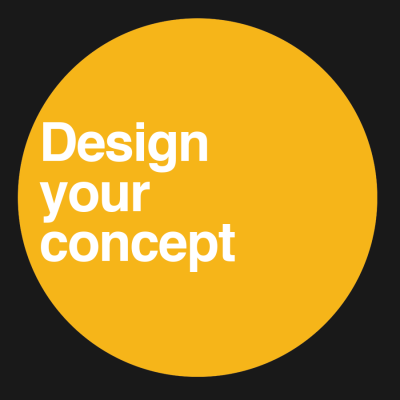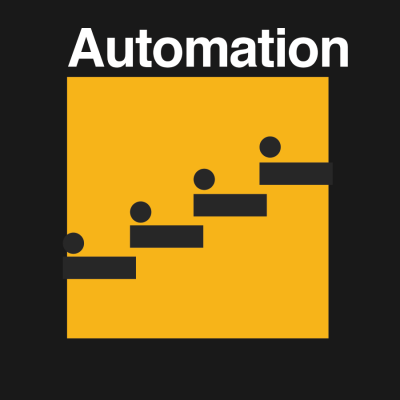Today we are proud to launch the 2016 Hackaday Prize. Build Something That Matters and you’ll contribute positively to humanity’s future by expand the frontiers of knowledge and engineering. You’ll also score recognition of your skills, and position yourself to land one of 105 cash prizes totaling over $300,000. Choose a technology issue facing humanity today and build a project that fixes, improves, or bypasses the problem.
You have the talent, the energy, and the capacity to change the world. Make the time and make a difference.
The Hackaday Prize is a competition synonymous with creating for social change. Using your hardware, coding, scientific, design and mechanical abilities, you will make big changes in people’s lives. Every idea has impact, and a massive force of ideas creates real change. This year we have more power than ever before to recognize the engineering projects that are solving problems: One hundred finalists will get $1,000 each for their efforts. This flat prize structure encourages collaboration rather than direct competition. Team up on each others’ projects and improve your overall chances of making it into the finals.
But it doesn’t stop there. From one hundred finalists, five will rise to be named top winners. Our expert judges will carefully review each of 100 world-changing final entries, choosing a grand prize winner to receive $150,000. Second place will be awarded $25,000, with $10k, $10k, and $5k going to third, fourth, and fifth.
New This Year:
This is the third time the Hackaday Prize has changed the world. The first year, we looked for anything that was considered a connected device. Last year we challenged you to create for social change. This year we have a perfect synthesis of constraints and freedom.
There are five challenge rounds that will run in series, each about five weeks. Enter one or more, it’s up to you!
Post your project on Hackaday.io and use the “Submit Project To…” part of your page to enter in the 2016 Hackaday Prize.
 Challenge 1 // March 14 – April 25
Challenge 1 // March 14 – April 25
We want to see your ideas in words and pictures. The Design Concept is the idea, it’s how you think about your project, it’s how you go about planning to solve the question you want to solve. It’s how you use your logic and creativity to move your design forward.
Show that you fully understand the problem, and have a clear plan that will lead to a successful build. The more information you have, the better. Consider mechanical, electrical, and design. What parts and materials will go into this and why were those choices made? How will it function electronically and have you made good decisions about how it is powered, and how it functions. What is your plan to make manufacturing feasible and to make it user friendly?
 Challenge 2 // April 25 – May 30
Challenge 2 // April 25 – May 30
You are a nonconformist, a misfit. You’re an independent thinker, a troublemaker, and have no respect for the status quo. Build whatever you want.
This challenge is for people who refuse to be constrained. Where traditional solutions have failed, you will succeed. Your creation, can be clever, astounding, excruciatingly simple; it can be anything.
Show that it is successful in solving the technology problem you are highlighting. Demonstrate that it can be reproduced and that it will be easy to use.
 Challenge 3 // May 30 – July 11
Challenge 3 // May 30 – July 11
This challenge is about expanding the frontiers of knowledge. Create something new, study something undiscovered, or replicate and verify scientific studies. Need an example? Build a graphene supercapacitor, study the effects of a behavior, build an open source instrumentation device.
The tools at your disposal are unparalleled in human history. The walls of the research laboratory have begun to be replaced by those in your own basement workshop. But our tool set is not complete.
Provide research technology to the masses by building the tools we need, or demonstrating how discovery can take place with your own small team of dedicated Citizen Scientists.
 Challenge 4 // July 11 – August 22
Challenge 4 // July 11 – August 22
Automate your life. Program a robot to obey your every command. Build a device that makes breakfast or buys laundry detergent when you’re running low. Automatically track stuff, automate any process, build a Me-robot to do your every whim.
What tasks are we still doing that should be done by a machine? Invent that machine! Technology doesn’t work unless it works for us, and there’s no better way for humanity to recognize that power than to see things happening without human intervention. Your creation will help raise awareness that automation is not to be feared, but something to strive for and to value.
 Challenge 5 // August 22 – October 3
Challenge 5 // August 22 – October 3
Build a project that helps others move better, see better, or live better. Whether that means exoskeletons, a better wheelchair, a braille display, or educational software, we want to see it.
There is no more noble pursuit than to improve the lives of others. Assitive technology is transformational for those who have access to it. Break down the barriers; make it easier for those who need a bit of assistance to get it and thereby achieve a better life.
Consider the opportunities we have through all different countries and cultures around the world. This challenge has myriad opportunities for entries, and just as many chances at making a life-changing difference.
Collaboration Unlocks Greatness
The Hackaday Prize video you watched above is a beacon of what can be accomplished as a team. All of it was put together by Supplyframe employees — from the script, to filming, acting, editing, and even music composition. A little planning, one day of shooting next to Salton Sea, and then a lot of follow-through produced amazing results. This is a path to follow with your Hackaday Prize entry.
Use the Challenge Rounds to build your dream team of mechanical, electrical, and design skills. The Hackaday community is collaboratively building amazing hardware every day. Jump in, talk about the vision you have for your project and the skills your team needs to get it there. This is the best way to connect with, and work alongside the collaborators you need to supercharge your entry. The grand prize winners from the last two years have been teams; working with others brings out the best in us.
Meet Our Judges

Judging the final round is a big job. We’re lucky to have the time and talents of so many amazing people. Judges for the 2016 Hackaday Prize include: Akiba, James Bruton, Peter Dokter, Lenore Edman, Christal Gordan, Ben Krasnow, Nadya Peek, Luz Rivas, Dustyn Roberts, Katherine Scott, Micah Scott, AnnMarie Thomas, and Anouk Wipprecht.
One More Thing
When realized to their full potential, design concepts should knock the socks off of anyone who reads through them. Because of this we have one more thing in store for you during Challenge Round 1: seed funding to get your build under way.
At least twenty entries with the most likes at the end of the first round will split $4,000. Each time someone on Hackaday.io “likes” your project it will move a bit higher on the leaderboard found on the Hackaday Prize page. The top projects will receive $1 for each like, with a max of $200 per entry so that at least 20 will win.
This seed funding is a little push to help offset the cost of building prototypes. But it really comes down to your decision to make the time and to make a difference. Enter your project in the Hackaday Prize now.
















Lets begin finally!
This year looks like it’s going to be epic – can’t wait to get started. Also, that video is great! Thank you Hackaday :)
Please put a ‘K’ behind the $5 for fifth place. Five dollars doesn’t sound too enticing for all the work to get that far… :P
Nice catch. You are right that it is $5,000 for fifth prize.
I wonder, can I recycle my idea/project from last year, which never really got off the ground for lack of time? Or does having entered a project in prior years disqualify it?
From the rules page:
Existing projects, or projects that were entered in previous presentations of The Hackaday Prize but did not advance to at least the Semifinal round, are eligible for submission as entries in this Contest with the following restrictions:
A new project page must be created
The project must be significantly different from when previously entered and show meaningful development during the course of the Contest.
Hi Paul! You should definitely enter it. Look at section 2 of the Official Rules. You need to make a new project page and the build needs to be significantly different from when previously entered and show development during this year’s Hackaday Prize.
Will do. I can definitely build new, different hardware, especially since the PCB from last year was only a very quick breakout board meant for initial experimenting (very little of which I actually got around to doing…)
Last year, despite doing so little real work, you guys *still* awarded me one of those Stick Vice prizes. I’ve gotta say, it’s been an awesome little tool, which I probably never would have tried otherwise. In fact, I’m thinking about buying a 2nd one soon.
Assuming you’re doing the early prizes again, I’d really encourage anyone to enter a project EARLY. Seems like practically everyone who was in early won at least a small prize!
Paul – thanks for the complement on Stickvise! Glad it is useful to you, means a lot coming from you.
You should be judging this thing! Ah, competing with Paul! Imagine the stress!
I’m so thrilled right now! Sadly couldn’t participate in 2015, but this year will be epic again! Also the video is awesome :D
What are the rules for the participants that aren’t from the USA? I couldn’t find the answer in the rules and FAQ.
Check section 2 of the Official Rules for your country. As long as it is not specifically excluded you may enter. If your country is not listed at all you may need to check that your local laws don’t prohibit you from participating.
Excuse me, i don’t really get it. Do we have to build 4 different things to fulfill the four challenges or is it a whole project that needs to fit each challenge? Thank you
You may choose to participate in just one Challenge if you wish — you don’t need to do every round. But if your entry fits in more than one challenge you may enter it into each of those as well.
The first challenge is about having a plan about what you’re going to build. So if you were planning to build something that deals with automation you should put together the product design information and enter it in Challenge Round 1, as well as showing off your prototype in round 4.
I wish there were something like this for innovation in general. Change the World and social change (What does that mean? Seems as fuzzy to me as social justice.) The great difficulty is that you can’t know till 50 or 100 years later – maybe longer – if something that causes social change turns out to be good or bad. A lot of things have seemed good at first and a hundred million dead people later it doesn’t look so good. A lot don’t kill so many like Hey! Lets build Peace Corp wells all over the southern edge of the Sahara! Oops!
Just sayin. A broader target opens up more possibilities, like basic research done DIY, etc. Might get a Smelloscope!
Anyone know of wide open tech/science contests?
this one. Especially the first category being called “Anything goes”. Can’t be more open, or not?
Missed that. Now I have to pull out the “ideas” notebooks…..
hello i have this idea for a very useful multi valued logical algebra and a method for finding minterms. Can i use this as an entry?
Did you just full screen flash me? What year is this?
What the heck is wrong with you? Fullscreen enterpage? That’s the kind of advertisment I installed AdBlock for!
Hackaday’s Thought Of The Day:
Forbes does it too.
Be ye better than they?
Brain.. For the love of god, consider being less snarky and more informative\matter of fact.
Just fucking say it – the hack a day prize is hackaday’s premier event\whatever, and advertising it calls for pulling out all the stops! Explain that its a bit of irony, even, to be using the loathed full screen ad format to advertise something so objectively wonderful as had prize.
Sure we can be annoying, but you represent HaD, not TMZ, Not forbes.. Just say it “we are excited about the contest and want to promote it with every tool we have’
Fuck forbes.
Hey YOU!
I’m sure Brian worked super hard on that boring video! I bet it was his idea to have a bunch of people sitting around and nothing happening…. Then…. Then they are in the desert standing around!!!!! Genius!! I never would have thought of standing around in the desert!
No prob Brian. I got your back.
Love,
AC
Thankfully, the flash-disabled-by-default policy caught it just in time to dodge out of its way. Now, onwards to 3D-printed drinking straws that will solve African droughts, WiFi enabled shower thermostats that will eco-cut the warm water just as you turn on the tap and glorified salt-shakers that will cure all sickness by measuring your pulse!
Hackaday advertising their own contest on their own site! For shame!
Thank you for indulging us the one day each year that we do this. The Hackaday Prize is worth it!
Can we at lest keep hackaday.com/blog free from this ‘featured post’ crap? I had stopped vising the site until someone told be about the blog which was sufficient to add you back to my daily browsing, but if you are going to continue to push this tripe I will be moving on.
Can’t wait till it goes away and back to normal, e.g. “typing ‘hackaday.com’ into the browser doesn’t make me have go through another (albeit minor) step of clicking another button to get to the content I want.
:cough: bookmarks :cough:
As for me, I live here so much that as quickly as I can hit H I’m at http://hackaday.com/blog.
:sigh: Let’s try that again. <CTRL-L>H<ENTER>
In the video…Was that Biff Henderson??
Hi all,
Anybody thinking about harvesting drinking water from sea evaporation?
I’m thinking along the lines of a floating ‘solar still’ type of collection device, (unless there’s a better collection method). I just wonder if fishing boats for example, could be fitted with a parachute type canopy for collecting evaporate. After all, the clouds are made in nature and ‘she’ doesn’t need external energy processes to desalinate the sea water? In lieu of fishing vessels then perhaps dedicated pontoons could be deployed?
Note: Of course nature uses vast amounts of energy, but I’m looking at this from the perspective of the energy ‘costs’ having already been met.
I can picture massive floating “de-humidifiers” using Peltier coolers and solar arrays for power. So, what is the surface water temperature where you want to do this? You can probably calculate how much water you get per square meter if you force humidity to say, 10%. I think you can generalize the calculation pretty easily if you use dew point instead of humidity.
@TheRegnirps
I’m trying to think outside of the box of having to use any form of external/extra energy to increase humidity… It’s a fair point you made about thinking strictly ‘dew-point’ rather than humidity.
I don’t know how far I’ll get with this but for the minute, I’m drawing out an enclosed system that I think might be a viable and more importantly ‘cheap and scaleable’ device to address this issue. If I can manage a prototype for the HaD contest I’ll submit and the ‘maths’ can be worked out as things develope and by better minds than mine, I’m sure.
And the salt that gets separated can be sent to Minnesota to dump on their highways every time a snowflake is sighted.
(At least this past winter wasn’t as bad as some years…)
Are you going to need the under-coating on that new car Mr. Ren?
I was thinking more like an open bottomed thingoid with sea water flowing by/though so no salt and no heating. Just cooling to condense out the water vapor. Th ocean will be a virtually unlimited heat source.
If you design it to be modular, you can test such a system on land near a pond or river. I’m thinking you could use a parabolic mirror to focus sunlight to a focal point. At such point, a blackened mini-radiator would absorb the heat to boil the water which will flow through heat exchangers to heat up incoming seawater. The incoming seawater would be heated; converting some of it to steam that can run through more heat exchangers if it’s still too hot. All of this steam can be sent to turbines to generate electricity as well as the mechanical energy to run some of the intake pumps. Use some of the electricity to regulate exhaust pumps to help transfer steam, freshwater, and brine (leftovers) throughout the system while maintaining pressure and velocity. The brine exits into the sea or is converted into seasalt (the kind you can put in food or on the ground) and, if it exists with enough force, it can propel the ship to the optimal position to capture sunlight. Hell, if done right, you could get some hydrogen out of it.
Love the hack a day prize! Looking forward to watching this one develop!
Hi! It looks really great this year!
I just have a question.. I’ve got two projects: one for ‘automation’ round, and one for ‘assistive technologies’ round.. Should I enter the plans/outline for both in the ‘design your concept’ round, or is that too many entries?
Thanks!
Yes, enter plans for both in the first challenge. The two project pages can be entered in the appropriate later theme rounds too.
I’ve read technical reference manuals that are simpler to read then these entrance instructions.
yes i saw this the 20 times it showed me when i tried to load up a page
had to reactivate adblock
Does it have to be actual working project? Because if not, I’ll invent warp drive and zero point energy, a combination required to make space exploration and colony beyond solar system possible.
Sounds ready for a series-A venture funding round – just make sure it’s graphene-based and it can be controlled from an app..!
Huge props to HaD for having gender equality and some diversity on a panel that would purport to change the world.
I live in quebec and as I understand we are ineligible from the prize due to our complicated regulations. Since I have a lot of family in other provinces could I register a project through someone else ? thanks
Having not a clue as to what PDT time is, would you be able to add a note for the equivalent GMT/UTC times?
Oh, and good luck to all participants… HaD rocks!
Los Angeles is currently -0700 GMT
(You’re welcome)
Pacific Daylight Time i.e US West Coast time with the silly +1 hour added so that *everyone* have to wake up an hour earlier.
hello i’m thinking of working on a new logic minimization heuristic. will it be eligible as an entry?
Hopefully it’s not too successful. Idealistic is a heuristic system with fully minimized logic.
Submitted!
https://hackaday.io/project/10207-retro-console-using-pi-zero
It’s unfortunate these contest require full disclosure.
An idea itself is worthless. Through hard work of its implementation I create value. Now even if I win this contest, that value to me is limited to prize money minus taxes. If I don’t win, due to lack of popularity or not lack of heart strings pulled (ref last year’s contest), I see no money and I’ve given away all my hard work…. for humanity …and Supply Frame.
Is the sentiment similar to pirated copyrighted works? i.e. You had a chance to make money, you might have made money, you still might, but all information should be free, man.
I understand how the money flows and why you want to drive more traffic to the io thing, but I don’t think it’s too much to ask for the elimination of Hackaday’s “anything not fully ‘open’ is evil” shtick.
Nice video on a shoestring budget.
Is there any kind of protection or guarantees on ideas/inventions submitted?
Yes. All of them.
I think you miss the point. This is not an idea contest, your idea is worthless and doesn’t need to be novel. In fact it appears best to just regurgitate a heavily prechewed concept like vision controlled wheelchairs.
No, in this contest, you invest large amounts of your time and money developing someones concept from idea to prototype then play the popularity game.
Along that trudge you’ll be required to give your future competitors EVERYTHING in the hopes your original content will create ad revenue for these middlemen. Although this eliminates any possibility of building a business around your concept, take solace in the off chance you might recoup a fraction of your spent resources by being popular enough to win.
…oh ya and it’s really for humanity or some BS like that.
P.S. Don’t worry too much about the technical stuff. Just make sure the idea is popular and your work is well documented ……and MOST importantly, entertaining. Always keep in mind what the contest is and isn’t.
Do you guys submit patents for the finals inventions?
It says to win the final round we have to ‘build something’. What if the concept is entirely software based. Would ‘build something’ include writing code?